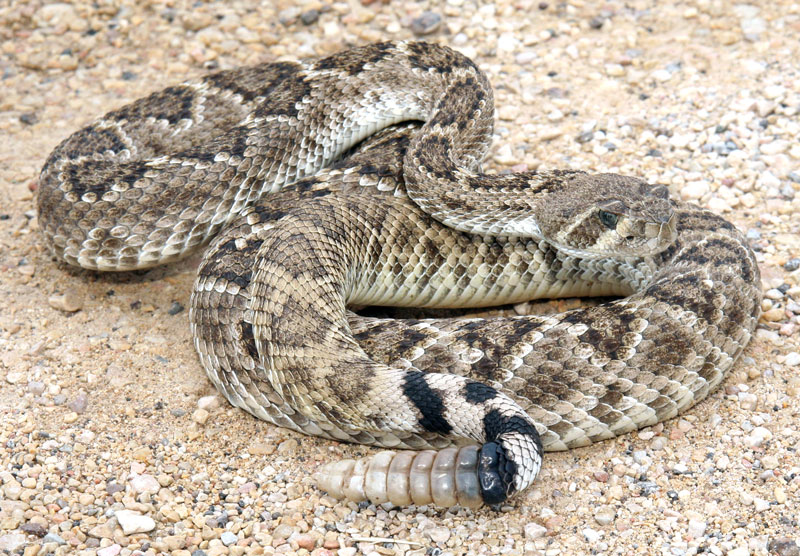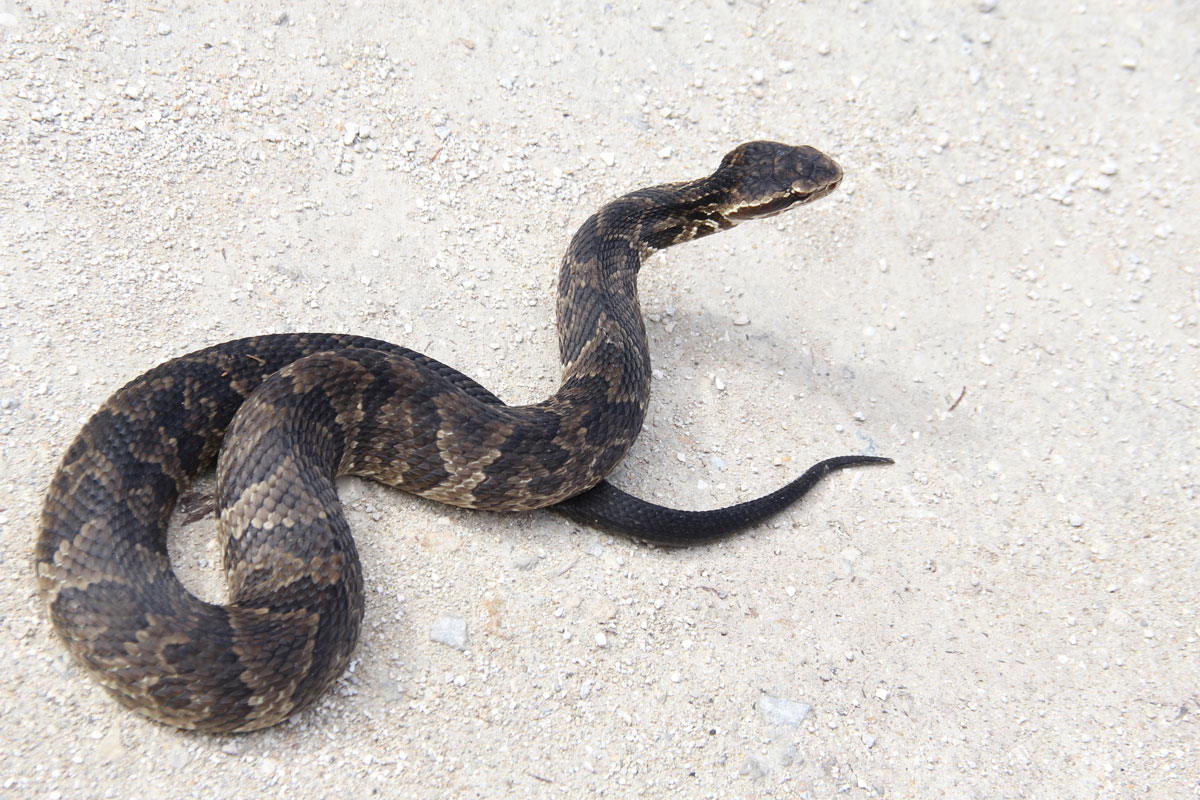
Western diamondback rattlesnakes are the most common venomous snakes in Texas. Identifiable by the diamondback pattern along the back and the rattles on the tail, diamondbacks are not the only snakes that rattle their tales when alarmed. iStock image
Spring in the Highland Lakes means two things: wildflowers and snakes. While enjoying the flowers, watch out for the snakes. Also, make sure the information you have on snakes is true. Myths abound about snakes, both venomous and not. Here’s what our research turned up when studying the subject of snakes.
MOSTLY MYTHS
“Copperheads smell like cucumber.”
False. Snakes give off an offensive musky odor as a defense mechanism. The odor comes from glands at the base of the tail and is produced at will. It has been pointed out that “if cucumbers smelled that bad, no one would eat them!”
“Rattlesnakes always rattle before striking.”
False. A rattlesnake’s first line of defense is to sit still and hope it is not noticed. Rattling comes second — mostly as a plea to not step on them — when the snake feels interaction is unavoidable. If a snake is completely caught off guard, it is more likely to strike, without rattling, in self-defense.
“Juvenile venomous snakes are more dangerous than adults.”
False. Young snakes can control their venom and have less of it to inject. The amount of venom in a snake’s venom gland increases with the size of the snake.
“You can tell a rattlesnake’s age from the number of rattles.”
False. Each new segment, or “button,” on the rattle is added each time a snake sheds its scaly skin. How often a snake sheds is determined by species, age, and environment. Some might shed several times a year. Rattles that become eight to 10 segments long also tend to break off.
“Some snakes are aggressive.”
False. Snakes are shy, sedentary reptiles. They do not seek trouble. Quite the opposite, they don’t want to be seen. A snake is typically just as frightened as the person during an encounter and simply wants to flee as quickly as it can. Occasionally, when both the person and the snake try to flee in the same direction, it can be misconstrued as snake aggression. A snake’s defense mechanisms (striking, lunging, hissing, or rasping) can certainly be interpreted as aggression.
“Only venomous snakes have triangular heads.”
False. Pit vipers do have triangle-shaped heads but so do some non-venomous snakes. Also, some non-venomous snakes can flare the sides of their heads as a defense mechanism, making them look triangular. A coral snake, which is venomous, does not have a triangular head.
“Cottonmouths always swim with the entire body visible on water.”

Cottonmouth, also known as water moccasins, have thick, heavy, dark-colored bodies and are often found near water. They are known for their open-mouth warning, which exposes the white tissue inside. The myth that they only swim on top of the water is not true. iStock image
False. Cottonmouths often do swim on top of water, but they also swim submerged. Any snake is capable of swimming both on or under the surface.
“Snakes cannot strike underwater.”
False. Come on! Snakes can and do strike underwater, specifically water snakes and any other snakes that prey on fish.
“All venomous snakes have elliptical pupils.”
False. Rattlesnakes, cottonmouths, and copperheads have elliptical pupils. Some non-venomous snakes have elliptical pupils as well. Coral snakes do not. Since the pupil reacts to light, most snakes appear to have round pupils in low light.
“Only rattlesnakes rattle.”
False. Only rattlesnakes HAVE rattles, but many venomous and nonvenomous snakes vibrate their tales when startled, producing a rattle sound.
For information on identifying venomous snakes in the Highland Lakes, see our outdoor writer Jennifer Greenwell’s story here.
jgreenwell@thepicayune.com








